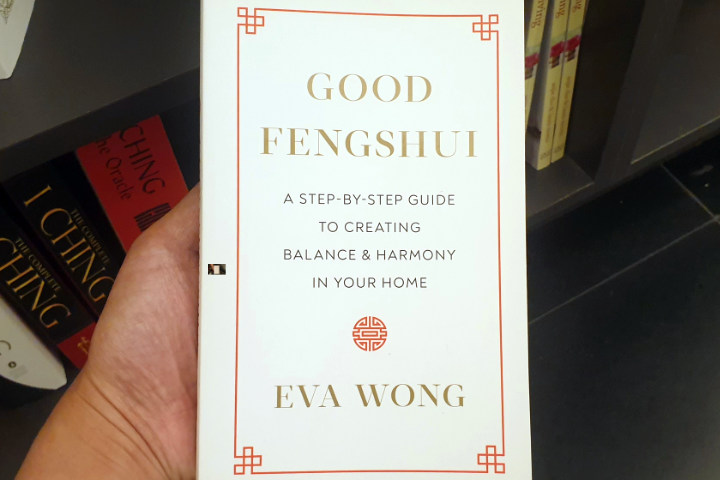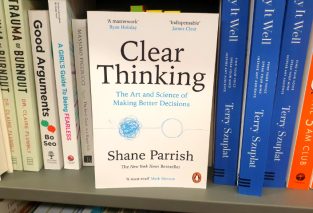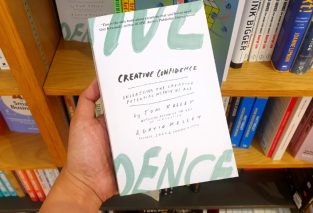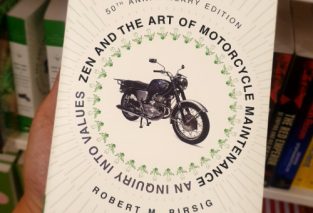Eva Wong’s Good Feng Shui is a manual for creating harmonious spaces and an invitation to rethink the very essence of how we interact with our surroundings.
In a world increasingly attuned to the value of mindfulness and balance, this exploration of Feng Shui offers more than mere tips for rearranging furniture or drawing on a floorplan.
The writer delves into an ancient philosophy that connects the physical with the spiritual, the material with the ethereal. In doing so, it brings forward a concept that is often misunderstood in the Western world, providing readers with both a practical guide and an accessible entry into the philosophical principles that undergird this profound system of thought.

This book serves as both a spiritual exploration and a tactical guidebook for those seeking to transform their homes and lives into a sanctuary of positivity.
You can feel that the author is imbued with a sense of reverence for Feng Shui’s long history.
While the book’s primary aim is to teach readers how to create environments that foster health, prosperity, and well-being, it also explores the spiritual underpinning of Feng Shui as a practice that engages with the environment not just physically but energetically.
The book is filled with insights that make the ancient practice feel remarkably contemporary.
It begins by inviting us to consider how energy, or chi, flows through our lives and spaces, arguing that where and how we live can deeply affect our mental, physical, and emotional states.
The importance of Feng Shui lies not merely in the decorative or structural changes one can make to their environment, but in the deeper connection between personal energy and the energy of the spaces we inhabit.
In the context of this connection, There’s a compelling case that when one aligns with the flow of chi, they align with the natural rhythms of the universe itself.
What is most striking about the book’s approach is how seamlessly it integrates traditional Feng Shui principles with modern sensibilities.
Rather than leaving the reader feeling overwhelmed by the intricate details of Feng Shui lore, it emphasizes its practical application.
There is an acknowledgement of the importance of personal preference and the unique qualities of a given space, urging readers not to sacrifice style for the sake of tradition but to find ways to merge aesthetics with the principles of balance and flow.
This is particularly important because many Western readers may initially approach Feng Shui with skepticism, assuming that it is merely an ancient superstition or just a passing trend.
This notion is dispelled by demonstrating how Feng Shui is rooted in a deep understanding of energy and the interconnectedness of life.
Take, for instance, the author’s approach to the concept of the bagua. The map used to determine how different areas of one’s home correspond to different aspects of life, such as wealth, health, relationships, and career. She presents it as both a practical tool and a spiritual guide, offering a nuanced approach that does not reduce Feng Shui to a simplistic checklist of “do’s” and “don’ts.”
It’s here that the reader begins to see how Feng Shui extends beyond mere design tips into a philosophy that promotes balance between one’s internal world and the external environment.
In fact, this piece of work is not so much a book about aesthetics as it is a book about mindfulness and intention. It subtly conveys that creating good Feng Shui is less about “getting it right” in terms of rules and more about approaching one’s space with awareness and a sense of purpose.
It captures the essence of fengshui as more than mere spatial design. It is a philosophy of balance and harmony.
One of the more accessible aspects of the book is the discussion of the five elements (wood, fire, earth, metal, and water) and how they play a crucial role in both the physical and energetic balance of a space.
By understanding the relationship between these elements, readers can better comprehend the interplay of energies that dictate the flow of chi.
Wong’s writing on this topic is straightforward yet rich with meaning.
The elements are not static or separate. They are dynamic, influencing and being influenced by one another in a constant state of flux.
It’s a poetic reminder that life, like our environment, is always in motion.
This perspective imbues Feng Shui with a vitality that resonates deeply with the modern reader who might be caught in the often stifling routines of contemporary life.
It’s also notable that it emphasizes the importance of intuition and personal connection to one’s space. This perspective encourages readers to trust their instincts and make adjustments that resonate with their unique energy. This approach is refreshingly inclusive, allowing for individual interpretation and adaptation rather than rigid adherence to rules.
Shortcomings
While the book provides a solid foundation for those seeking to improve their environment, its brevity at times leaves certain complex concepts only lightly touched upon.
For instance, the intricacies of Feng Shui’s historical development and the variations between different schools of thought could have been explored more in-depth. How it evolved would have been particularly interesting.
But at the same time, it has to be acknowledged that this is a very diverse topic that cannot be comprehensively covered in 1 book.
There is also a tendency to overly simplify certain aspects, particularly when it comes to the “quick fixes” that readers might expect from a guide on home decor.
Though the book does encourage a holistic approach to living with Feng Shui, it occasionally leans towards surface-level suggestions without fully addressing the emotional and psychological challenges of implementing change in one’s life.
As a result, some readers might find themselves seeking more depth on the philosophical underpinnings of Feng Shui, especially when faced with the limitations of their space or personal situation.
To remedy this, the book could have delved deeper into the psychology of space and energy, illustrating how individual and collective consciousness shapes the environment in profound ways.
A discussion of how the energy of a room can shift depending on the presence of its inhabitants or the emotional states tied to specific objects would have added another layer of richness to the book.
Additionally, the inclusion of case studies or real-life testimonials could have provided readers with concrete examples of how Feng Shui has been applied to varying living situations, offering a more immersive and personalized approach.
Biggest Takeaway
The emphasis on mindfulness in the arrangement of one’s surroundings.
The book don’t merely offering instructions. It invites readers to step back and reflect on how their living spaces reflect their values and aspirations.
The process of creating good Feng Shui is less about outward perfection and more about inward alignment.
Because we are often distracted by external stimuli, the act of intentionally cultivating harmony in one’s immediate environment becomes a deeply personal journey.
By applying the principles of Feng Shui, readers are encouraged to clear the clutter not only from their spaces but from their minds, allowing for a greater flow of creativity, energy, and well-being.
I also find it particularly interesting how fengshui is classified by the author into 3 segments of common sense, intuitive and technical. It opened my mind to how I view this topic.
This book is an insightful and deeply informative guide for anyone looking to bring balance and vitality into their lives.
The effort to make ancient wisdom approachable for the modern world is commendable.
By blending the practical with the philosophical, the author provides a compelling argument for the idea that our surroundings are not mere backdrops to our lives but active participants in shaping our well-being.
In a sense, Wong’s approach to Feng Shui is both a healing and a creative act. A way to design one’s life from the inside out.
After all, if your home is where the heart is, then it might just be time to put a little more chi in your life.
And perhaps, as Wong would have it, the key to finding true balance in one’s life is not so much about perfecting the space but living in the space you’ve feng-shui-ed yourself into.




